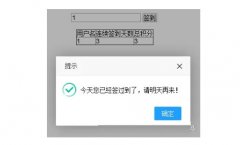PHP引用(&)各种使用方法实例详解
时间:2023-12-12PHP引用(&)各种使用方法实例详解
在PHP中,引用是一个很强大的特性。引用可以让我们在不复制原始值的情况下,对变量进行操作。本篇攻略将详细讲解PHP引用(&)的各种使用方法。
变量引用
在PHP中,通过&符号可以将一个变量设置为另一个的引用。这意味着,两个变量实际上引用了相同的值,甚至在其中任何一个被修改时,另一个都会发生变化。
以下示例展示了如何通过引用将两个变量连接在一起:
$name = "Lucy";
$nickname = &$name;
$nickname = "Lucy Liu";
echo "原名:$name";
echo "<br>";
echo "昵称:$nickname";
输出结果为:
原名:Lucy Liu
昵称:Lucy Liu
在上面的示例中,我们通过&符号将$nickname设置为$name的引用。因此,当我们将$nickname的值设置为"Lucy Liu"时,$name的值也会被修改。
函数引用参数
在PHP函数中,我们可以将参数设置为引用,这意味着在函数内部对引用参数的更改将反映在调用函数时使用的原始变量上。
以下示例展示了如何在PHP函数中使用引用参数:
function update_name(&$name, $new_name) {
$name = $new_name;
}
$name = "Lucy";
update_name($name, "Lucy Liu");
echo "修改后的名字:$name";
输出结果为:
修改后的名字:Lucy Liu
在上面的示例中,我们创建一个名为update_name的函数,并使用&符号将$name参数设置为引用变量。在函数内部,我们将$name设置为$new_name的值,这意味着我们将修改原始变量的值。
数组引用
在PHP中,我们可以将整个数组设置为引用。这意味着对原始数组所做的更改也会反映在引用变量上。
以下示例展示了如何使用数组引用:
$fruits = array("apple", "banana", "orange");
$basket = &$fruits;
$basket[] = "grape";
print_r($fruits);
输出结果为:
Array
(
[0] => apple
[1] => banana
[2] => orange
[3] => grape
)
在上面的示例中,我们通过&符号将$basket数组设置为$fruits数组的引用。然后我们将"grape"添加到$basket数组中,这意味着原始$fruits数组也会被修改。
迭代器引用
在PHP中,我们可以使用迭代器类的引用。迭代器类可以遍历数组或对象,并返回它们的值。
以下是一个简单的迭代器引用示例:
class MyIterator implements Iterator {
private $items = array();
public function __construct($array) {
$this->items = $array;
}
public function rewind() {
reset($this->items);
}
public function current() {
return current($this->items);
}
public function key() {
return key($this->items);
}
public function next() {
return next($this->items);
}
public function valid() {
return key($this->items) !== null;
}
}
$fruits = new MyIterator(array("apple", "banana", "orange"));
foreach ($fruits as &$value) {
$value = strtoupper($value);
}
print_r($fruits);
输出结果为:
MyIterator Object
(
[items:MyIterator:private] => Array
(
[0] => APPLE
[1] => BANANA
[2] => ORANGE
)
)
在上面的示例中,我们创建一个实现了Iterator接口的迭代器类MyIterator。然后我们创建一个$fruits对象,并用引用遍历数组中的每个值。在循环中,我们将每个值转换为大写字母,因此原始数组也会被修改。
以上是PHP引用(&)各种使用方法的实例详解。通过对引用的理解和使用,将使PHP代码更加高效且易于维护。
 PHP+ajax+mysql+layui实现每日签到及提醒功能这篇文章主要为大家详细介绍了使用 PHP + layui 实现每日 签到 及提醒功能,具有一定的参考价值,感兴趣的小伙伴们可以参考一下,首次签到获得1个积分,第二次签到获得2个积
PHP+ajax+mysql+layui实现每日签到及提醒功能这篇文章主要为大家详细介绍了使用 PHP + layui 实现每日 签到 及提醒功能,具有一定的参考价值,感兴趣的小伙伴们可以参考一下,首次签到获得1个积分,第二次签到获得2个积